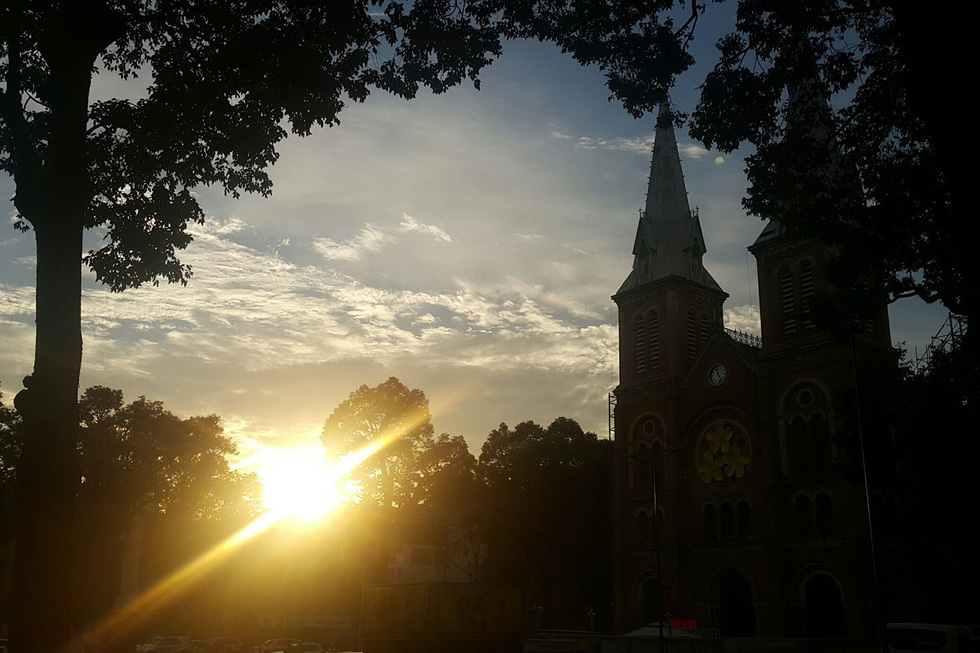A number of local cultural heritage sites and architectural landmarks in Ho Chi Minh City are in dire need of preservation, researchers said at a panel discussion in the southern metropolis on Thursday.
The event, named “Sai Gon Pho,” literally translated as ‘Saigon Streets,’ served as a forum to solicit ideas from architects, experts, and researchers associated with relevant departments and agencies with the goal of finding solutions for maintaining the city’s heritage sites.
Researcher Tran Huu Phuc Tie’s speech at the event, organized by the Architecture Research Center under the municipal Department of Urban Planning and Architecture, pointed out ten specific landmarks of Ho Chi Minh City in dire need of conservation.
One of the areas Tien highlighted was the bank of the Saigon River, a landmark he says is an important reflection of the city's historical dependence on the river.
“Something must be done to highlight the old and new neighborhoods built on both sides of the river, similar to what other big cities have done,” he underlined.
The second area Tien discussed was a stretch of neighborhood between Signal Mast, or “Cot Co Thu Ngu” in Vietnamese, and the intersection of Dinh Tien Hoang with Ton Duc Thang Streets.
 |
| Ton Duc Thang Street is seen in District 1, Ho Chi Minh City. Photo: Gia Tien / Tuoi Tre |
Other areas in need of conservation include the iconic Ben Thanh Market, the current headquarters of the Vietnam Railways company, and several streets located in the city center such as Phan Boi Chau and Phan Chu Trinh.
In terms of preserving iconic French colonial architecture in the city, Tien pointed out that The Saigon Central Post Office, the headquarters of the Ho Chi Minh City branch of the State Bank of Vietnam, Cao Thang Vocational School, Le Hong Phong High School, the Municipal Theater of Ho Chi Minh City, Dong Khoi Street, and Binh Tay and Cho Lon Markets are also in need of upkeep.
 |
| Ben Thanh Market is seen in District 1, Ho Chi Minh City. Photo: Gia Tien / Tuoi Tre |
Likewise, architect Cao Thanh Nghiep suggested the conservation of Binh Loi Iron Railway Bridge in Binh Thanh District, which was the first of its kind to cross the Saigon River when it was built in 1902.
Experts at Thursday’s event agreed that the city’s tourism industry can bring in more cash by preserving these iconic locations, rather than replacing them.
Particularly, Singaporean architect Monty Tejam gave several examples of heritage conservation creating jobs in countries such as Sweden, Australia, and Norway.
“Visitors, who are interested in heritage, stay longer and spend more money in places where there are heritage sites,” said Tejam.
 |
| The Ho Chi Minh City’s post office is seen in District 1. Photo: Gia Tien / Tuoi Tre |
Adding to Tejam’s insights, a research group from the Architecture Research Center presented surveys showing that Ho Chi Minh City areas where heritage buildings are located tend to be visited more often by tourists. Cafés, restaurants, and eateries in these places also appeal to holidaymakers.
Dr. Nguyen Luu Bao Doan from the University of Economics Ho Chi Minh said it is more important for “the heritage sites to ‘live’ on their own income rather than to rely on state budgets,” suggesting that those charged with heritage conservation should partner with the private sector.
According Doan, private investment should be encouraged so that conservation can benefit both the public and investors.
 |
| The Notre-Dame Cathedral Basilica of Saigon in District 1 is pictured at sunset. Photo: Gia Tien / Tuoi Tre |
Like us on Facebook or follow us on Twitter to get the latest news about Vietnam!



















































